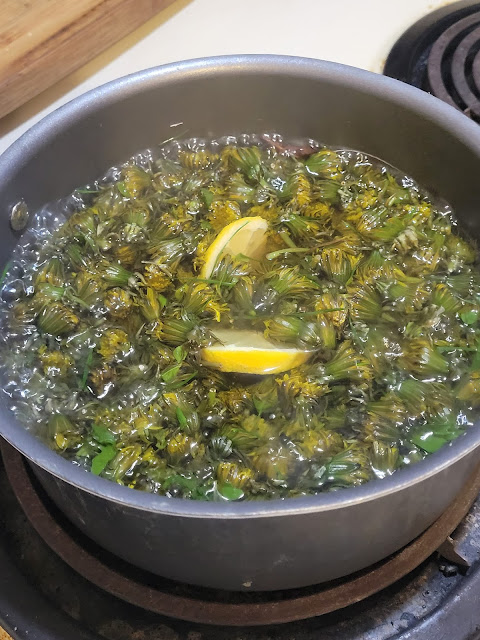From Feisty Birds to Culinary Excellence: Unlocking the Secrets of Rooster Broth and Canned Delights
Handling four mean roosters may sound like a daunting task.
Preparing the Roosters:
Dealing with mean roosters requires caution and careful handling. Start by ensuring you have a secure and spacious area where you can safely process the birds. It's essential to follow proper poultry processing techniques or seek guidance from experienced individuals to ensure safety and efficiency. Once the roosters are processed, it's time to transform them into culinary delights.
Creating Flavorful Rooster Broth:
To make a rich and flavorful rooster broth, begin by placing the processed rooster carcasses in a large stockpot. Add enough water to cover the carcasses and bring the pot to a gentle boil. Skim off any impurities or foam that rise to the surface. Reduce the heat to a simmer and let the rooster carcasses simmer for several hours, allowing the flavors to infuse the broth. You can enhance the taste by adding aromatic vegetables, such as onions, carrots, and celery, along with herbs and spices like bay leaves, thyme, and black peppercorns. Strain the broth to remove any solids, and you will be left with a golden, flavorful liquid ready to be used in a variety of dishes or preserved for later use.
Canning Rooster Meat:
Preserving the rooster meat through canning ensures that it can be enjoyed for months to come. After processing the roosters, separate the meat from the bones and skin. Cut the meat into smaller, manageable pieces and pack them into sterilized pint-sized canning jars, leaving appropriate headspace. You can add a touch of salt or other seasonings if desired. Process the jars in a pressure canner according to recommended guidelines for poultry meat. Once the canning process is complete, you'll have sealed jars of tender and flavorful rooster meat ready to be used in stews, soups, or as a protein-rich addition to various dishes.
Versatility and Culinary Creativity:
With 14 quarts of rooster broth and 6 pints of canned rooster meat, the culinary possibilities are endless. The rooster broth serves as a base for nourishing soups, stews, risottos, or even as a flavorful liquid for cooking grains. It can also be frozen in smaller portions for convenient use in future recipes. The canned rooster meat adds depth and protein to casseroles, sandwiches, salads, or can be enjoyed as a standalone dish. The combination of both broth and meat opens up a world of culinary creativity, allowing you to experiment and savor the fruits of your labor.
Transforming four mean roosters into 14 quarts of rich rooster broth and 6 pints of canned rooster meat is a labor-intensive process, but the rewards are worth every effort. By harnessing the flavors of the roosters and preserving them in broth and cans, you've created a stockpile of culinary delights that will bring warmth and depth to your meals. From hearty soups to savory stews, your homemade rooster broth and canned meat will be a testament to your dedication and culinary prowess. So, embrace the challenge, roll up your sleeves, and let the flavors of these feisty birds shine in your kitchen.
Recipe: Rooster Broth and Canned Rooster Meat
Ingredients:
- - 4 mean roosters, processed
- - Water
- - Aromatic vegetables (onions, carrots, celery), chopped
- - Herbs and spices (bay leaves, thyme, black peppercorns)
- - Salt (for canning rooster meat)
- - Pint-sized canning jars with lids (for canning rooster meat)
Instructions:
1. Place the processed rooster carcasses in a large stockpot. Add enough water to cover the carcasses.
2. Bring the pot to a gentle boil and skim off any impurities or foam that rise to the surface.
3. Reduce the heat to a simmer and add the aromatic vegetables, herbs, and spices to the pot.
4. Let the rooster carcasses simmer for several hours, allowing the flavors to infuse the broth. Stir occasionally and adjust the seasoning as needed.
5. Strain the broth through a fine-mesh sieve or cheesecloth to remove any solids.
6. Once strained, the rooster broth is ready to be used in various dishes or preserved for later use. It can be refrigerated, frozen in smaller portions, or canned using appropriatepressure canning methods.
7. To can the rooster meat, after processing the roosters, separate the meat from the bones and skin. Cut the meat into smaller, manageable pieces.
8. Pack the meat into sterilized pint-sized canning jars, leaving appropriate headspace (refer to canning guidelines).
9. Add a pinch of salt or other seasonings if desired.
10. Seal the jars with lids and process them in a pressure canner according to recommended guidelines for poultry meat.
11. Once the canning process is complete and the jars have cooled, store them in a cool, dark place for future use.
12. Enjoy the versatility of your homemade rooster broth by using it as a base for soups, stews, risottos, and other dishes.
13. Incorporate the canned rooster meat into your favorite recipes, such as casseroles, sandwiches, salads, or as a standalone protein-rich addition to meals.
Note: It's important to follow proper poultry processing and canning guidelines to ensure safety and prevent foodborne illnesses. Consult reliable sources or seek guidance from experienced individuals when processing roosters and canning meat.




















Comments